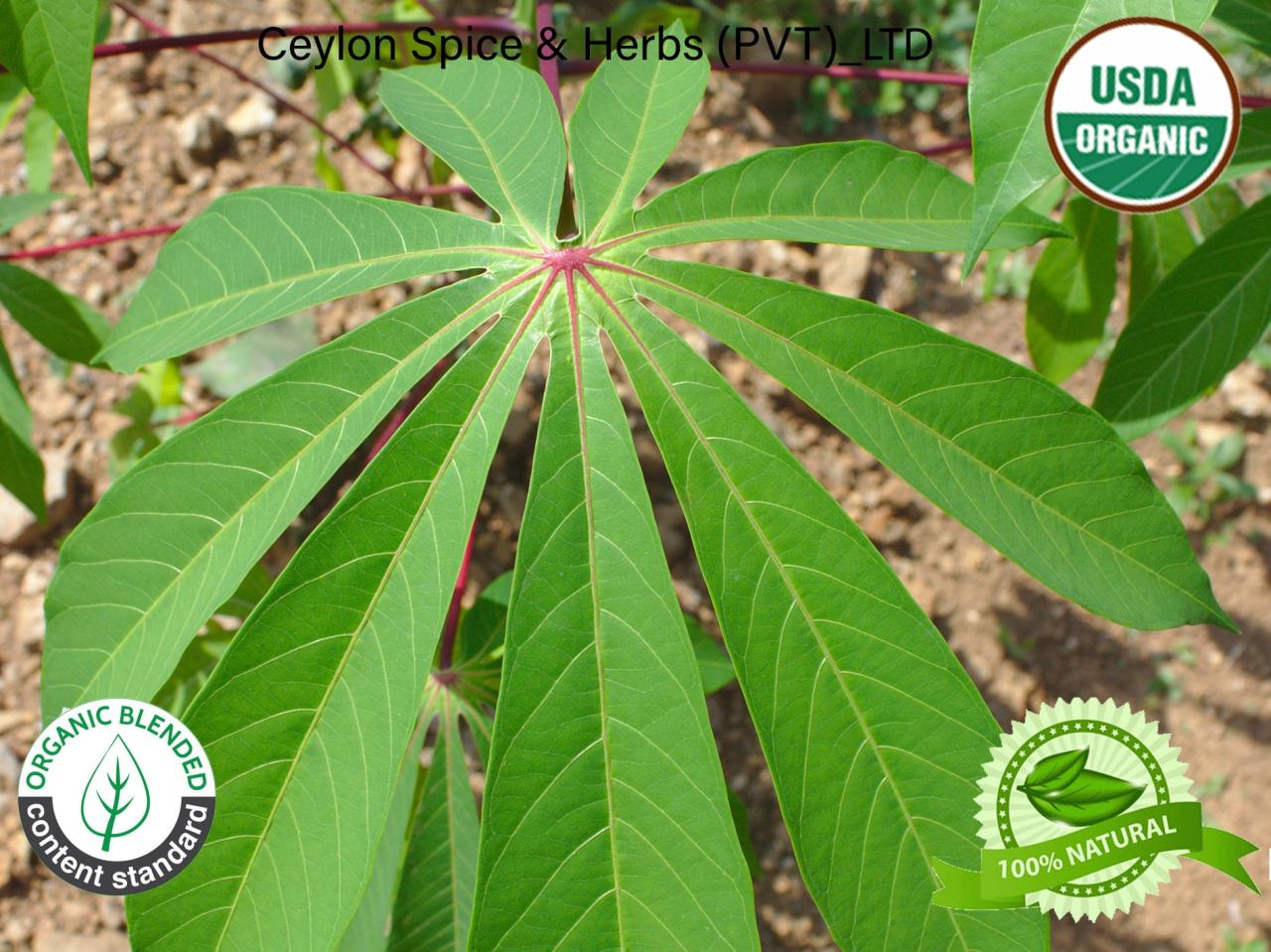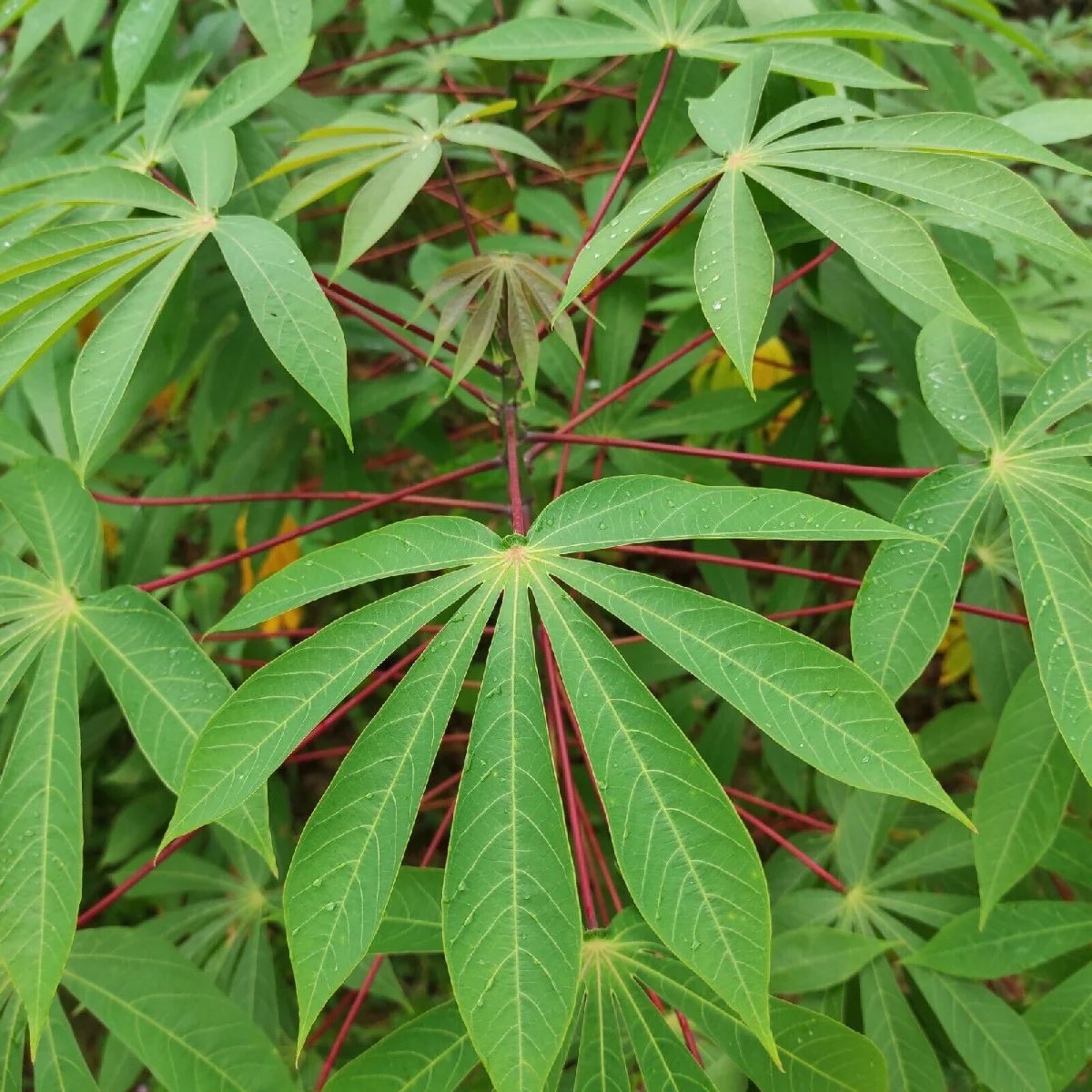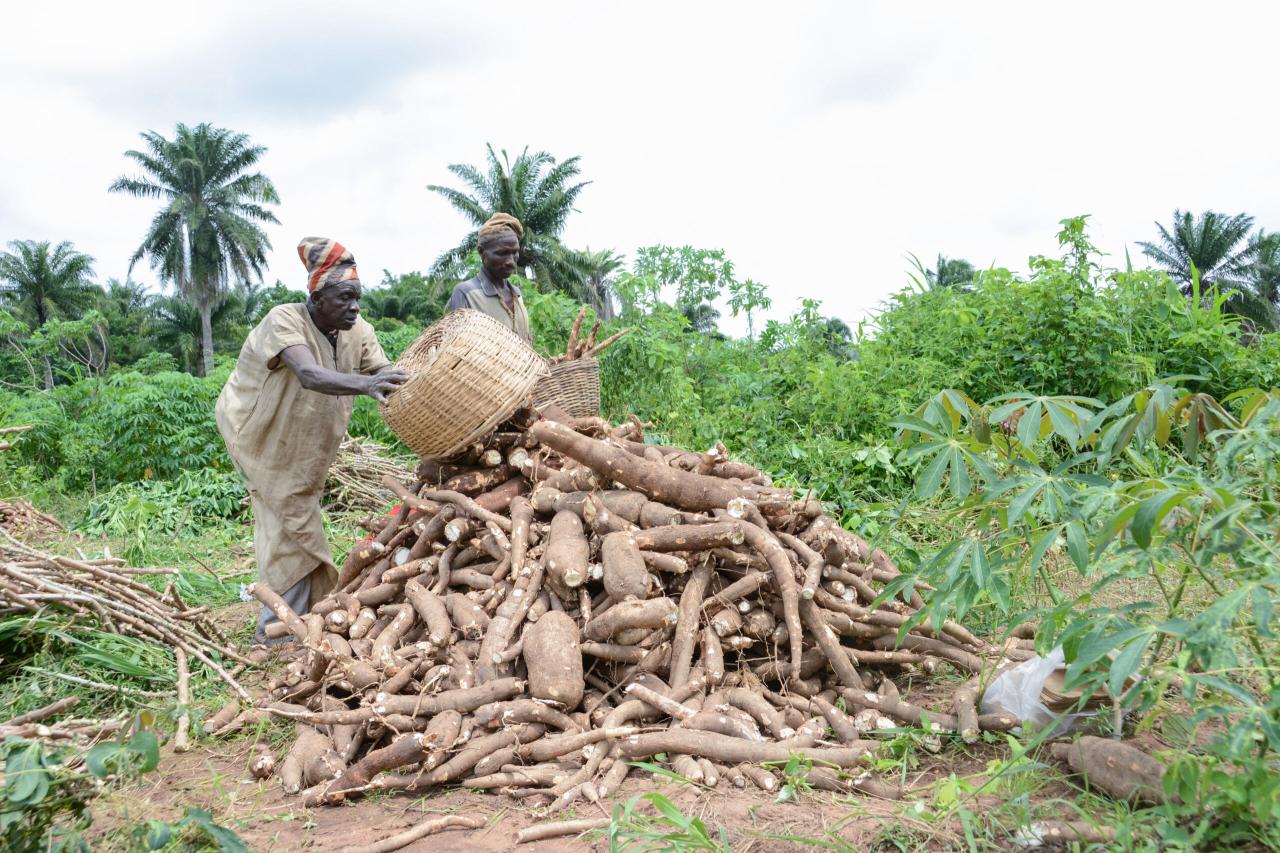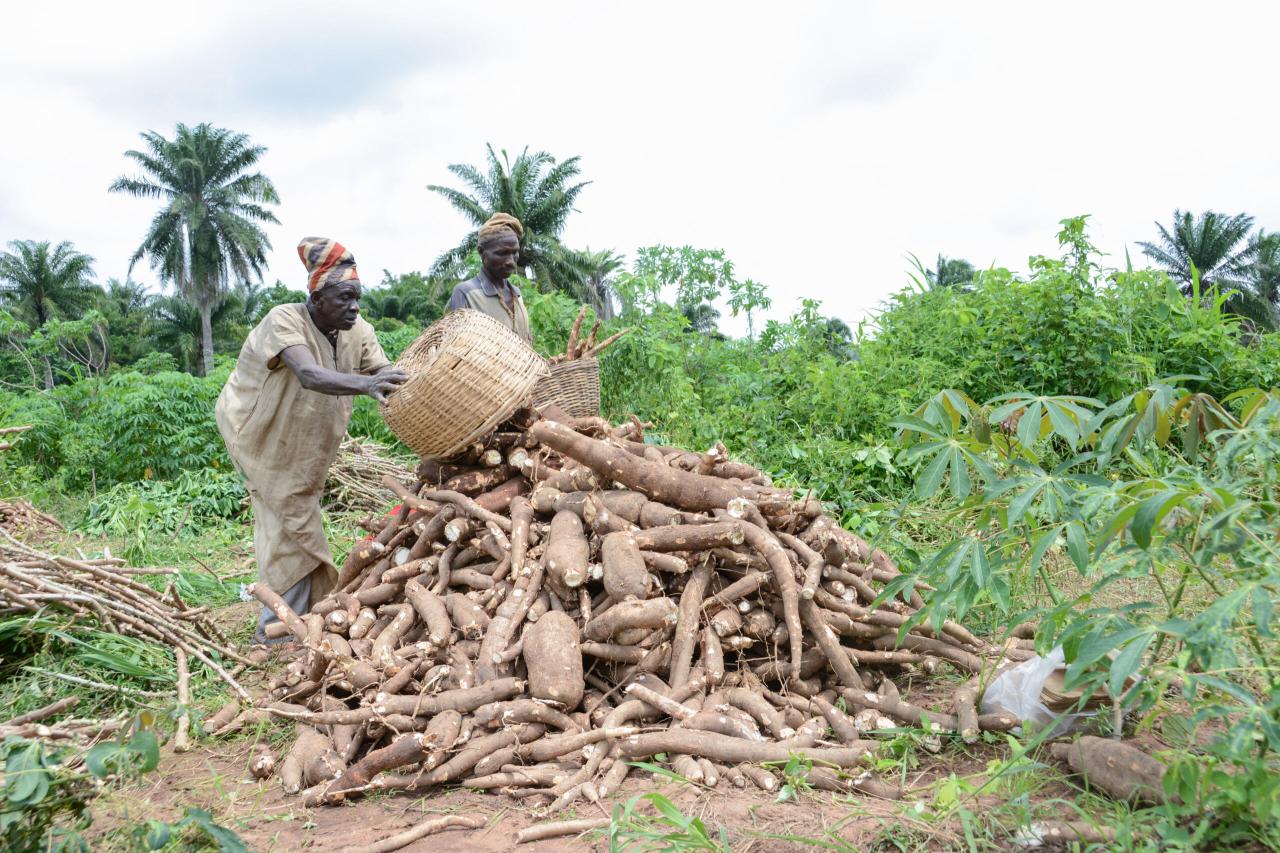How to Grow and Enjoy Cassava Leaf: Expert Tips for Healthy and Delicious Recipes – Cassava leaf, a nutrient-rich green often overlooked, is a culinary treasure waiting to be discovered. This versatile ingredient, a staple in many cultures, offers a wealth of health benefits and a unique flavor profile that can elevate your dishes.
From planting and harvesting to preparing and cooking, this comprehensive guide will empower you to embrace the world of cassava leaf, unlocking its potential for delicious and healthy meals.
This article will guide you through the process of cultivating cassava leaf, from choosing the right soil and climate to managing pests and diseases. We’ll explore the best harvesting practices to ensure optimal flavor and nutrition, and provide detailed instructions on cleaning, preparing, and removing any potential bitterness or toxicity.
Finally, we’ll delve into a collection of delicious recipes that showcase the versatility of cassava leaf in various cuisines, inspiring you to create culinary masterpieces.
Introduction to Cassava Leaf
Cassava leaf, also known as cassava greens or Manihot esculenta, is a versatile and nutritious leafy green vegetable that has been a staple food in many cultures for centuries. It is a rich source of essential nutrients, including vitamins, minerals, and antioxidants, making it a valuable addition to a healthy diet.
Nutritional Value of Cassava Leaf
Cassava leaf is a nutritional powerhouse, packed with essential vitamins and minerals that are crucial for maintaining overall health. Here is a breakdown of its key nutritional components:
- Vitamins:Cassava leaf is an excellent source of vitamin A, vitamin C, vitamin K, and folate, all of which play vital roles in various bodily functions, including immune system support, cell growth, and blood clotting.
- Minerals:Cassava leaf is also rich in minerals such as iron, calcium, potassium, and magnesium. Iron is essential for red blood cell production, calcium is crucial for bone health, potassium helps regulate blood pressure, and magnesium supports muscle and nerve function.
- Antioxidants:Cassava leaf contains antioxidants, such as flavonoids and phenolic compounds, which help protect the body from damage caused by free radicals, reducing the risk of chronic diseases.
Culinary Uses of Cassava Leaf
Cassava leaf is a culinary staple in many regions of the world, particularly in Africa, South America, and Southeast Asia. It is often used in traditional dishes, adding a unique flavor and texture to various cuisines. Here are some common ways cassava leaf is used in different cultures:
- Africa:In many African countries, cassava leaf is commonly used in stews, soups, and sauces. It is often cooked with other vegetables, meats, and spices to create flavorful and nutritious dishes.
- South America:In South America, cassava leaf is frequently used in dishes like “Manihot,” a popular soup or stew that often includes other vegetables, meat, and spices. It is also sometimes added to salads for a fresh and earthy flavor.
Cassava leaves, a nutritious and versatile ingredient, can add a unique flavor and texture to your dishes. While mastering the art of growing and enjoying cassava leaves is essential, don’t forget to consider the visual appeal of your garden. For a touch of tropical elegance, consider incorporating the papyrus plant, as detailed in How to Achieve Garden Elegance with Papyrus Plant: Essential Care and Growing Tips.
This striking plant, with its tall, feathery plumes, will create a stunning backdrop for your culinary creations. By combining the practicality of cassava leaf recipes with the aesthetic beauty of the papyrus plant, you can elevate your gardening and culinary experiences to new heights.
- Southeast Asia:In Southeast Asia, cassava leaf is often used in stir-fries, curries, and salads. It is commonly cooked with garlic, ginger, and other spices to create fragrant and flavorful dishes.
Benefits of Incorporating Cassava Leaf into a Healthy Diet
Incorporating cassava leaf into your diet can offer numerous health benefits. Its rich nutritional profile can contribute to:
- Improved Immune System:The high vitamin C content in cassava leaf can boost the immune system, helping the body fight off infections and illnesses.
- Enhanced Blood Health:The iron in cassava leaf can help increase red blood cell production, improving oxygen transport throughout the body and reducing the risk of anemia.
- Stronger Bones:The calcium in cassava leaf is crucial for bone health, promoting bone density and reducing the risk of osteoporosis.
- Reduced Risk of Chronic Diseases:The antioxidants in cassava leaf can help protect the body from damage caused by free radicals, reducing the risk of chronic diseases such as heart disease, cancer, and diabetes.
Cultivating Cassava Leaf
Cassava leaf, a nutritious and versatile green, requires specific conditions for optimal growth. Understanding the fundamentals of planting and cultivation ensures a bountiful harvest, allowing you to enjoy the unique flavors and health benefits of this tropical delicacy.
Soil Conditions for Cassava Leaf Growth
The soil plays a crucial role in cassava leaf’s growth. Ideally, it should be well-drained, fertile, and rich in organic matter. Cassava leaf thrives in slightly acidic to neutral soil with a pH range of 6.0 to 6.
5. Here’s a breakdown of key soil characteristics
- Soil Texture:Loamy soil, a blend of sand, silt, and clay, provides excellent drainage and aeration, facilitating root development and nutrient uptake.
- Soil Structure:A well-structured soil with good aggregation allows for air and water infiltration, essential for root growth and overall plant health.
- Organic Matter Content:Adding compost or manure enriches the soil with essential nutrients, improves water retention, and enhances soil structure.
- Nutrient Availability:Cassava leaf requires adequate levels of nitrogen, phosphorus, and potassium for healthy growth. Regular soil testing can help determine specific nutrient needs.
Climate Requirements for Cassava Leaf
Cassava leaf is a tropical plant that thrives in warm, humid climates. It prefers temperatures between 25°C and 30°C (77°F and 86°F) and requires ample rainfall or irrigation. Here are the key climate factors:
- Temperature:Cassava leaf grows best in warm temperatures, but it can tolerate some variations. Frost can damage or kill the plant.
- Rainfall:Regular rainfall is crucial for cassava leaf’s growth. However, excessive rainfall can lead to root rot. In drier regions, irrigation is essential.
- Sunlight:Cassava leaf needs at least six hours of direct sunlight per day for optimal photosynthesis and growth.
Planting Cassava Leaf
To ensure a successful harvest, follow these steps when planting cassava leaf:
- Prepare the Soil:Clear the planting area of weeds and debris. Dig a hole that is twice the width and depth of the cassava leaf cutting. Amend the soil with compost or manure to improve fertility and drainage.
- Select Healthy Cuttings:Choose cuttings from healthy, disease-free plants. Cuttings should be approximately 15-20 cm (6-8 inches) long and have at least three nodes.
- Plant the Cuttings:Place the cassava leaf cuttings in the prepared holes, ensuring that the nodes are buried in the soil. Water thoroughly after planting.
- Spacing:Space cassava leaf cuttings 60-90 cm (2-3 feet) apart to allow for adequate air circulation and sunlight penetration.
- Mulching:Apply a layer of mulch around the plants to retain moisture, suppress weeds, and regulate soil temperature.
Managing Pests and Diseases
Cassava leaf can be susceptible to various pests and diseases. Early detection and prompt action are essential to prevent significant damage.
- Pests:Common pests include aphids, mealybugs, and whiteflies. These pests can be controlled using insecticidal soap or neem oil.
- Diseases:Cassava leaf can be affected by diseases such as cassava mosaic disease (CMD) and cassava bacterial blight (CBB). CMD is a viral disease spread by whiteflies, while CBB is a bacterial disease spread through infected cuttings or contaminated soil.
Control measures include using disease-resistant varieties, practicing good sanitation, and avoiding planting in areas with a history of disease outbreaks.
Harvesting Cassava Leaf
Cassava leaf is typically harvested when the plants are 6-8 months old. Harvest the leaves by cutting the stems just above the ground level. The leaves can be used fresh or dried for later use.
Important Considerations
- Fertilization:Regular fertilization is essential for maintaining optimal growth. Apply a balanced fertilizer every 4-6 weeks.
- Watering:Water the cassava leaf plants regularly, especially during dry periods. Avoid overwatering, as this can lead to root rot.
- Weeding:Keep the planting area free of weeds to prevent competition for nutrients and water.
Harvesting Cassava Leaf

Harvesting cassava leaves at the right time is crucial for optimal flavor and nutritional value. It’s important to harvest sustainably to ensure continuous growth and productivity.
Cassava leaf, a staple in many cuisines, is a versatile ingredient that can be enjoyed in a variety of dishes. From hearty stews to vibrant salads, cassava leaf adds a unique texture and flavor to meals. For those seeking a distinct aroma and flavor profile, consider exploring the world of perilla leaf, often referred to as “shiso” in Japanese cuisine.
How to Incorporate Perilla Leaf into Your Recipes: Tips for Amazing Flavor offers a wealth of information on how to use this fragrant herb, and its versatility may inspire new culinary adventures for cassava leaf enthusiasts as well.
Harvesting Techniques for Sustainable Growth
Harvesting cassava leaves requires careful techniques to ensure sustainable growth. Here are some key points to consider:
- Harvest only the youngest leaves: These leaves are typically more tender and flavorful. Avoid harvesting the oldest leaves, as they are tougher and less palatable.
- Avoid harvesting the entire plant: Leave at least three to four leaves on each stem to allow for continued growth and photosynthesis.
- Harvest selectively: Instead of taking all the leaves from one plant, spread out your harvesting across multiple plants. This ensures that each plant has a chance to recover and produce new leaves.
- Use sharp tools: A clean knife or pair of scissors will make harvesting easier and less damaging to the plant.
Storage Methods for Preserving Freshness
Proper storage is essential to preserve the freshness and quality of harvested cassava leaves.
- Refrigeration: Place harvested cassava leaves in a plastic bag or container and store them in the refrigerator for up to 3 days. It’s important to keep them dry to prevent spoilage.
- Freezing: For longer storage, cassava leaves can be blanched and frozen. Blanching involves briefly immersing the leaves in boiling water for 30 seconds to 1 minute, then immediately transferring them to an ice bath to stop the cooking process.
Once blanched, the leaves can be drained, patted dry, and stored in freezer bags for up to 6 months.
Preparing Cassava Leaf for Cooking
Preparing cassava leaves for cooking involves several steps to ensure they are safe and palatable. It is essential to remove any bitterness or toxicity present in the leaves and prepare them for cooking.
Cleaning and Preparing Cassava Leaves
Cleaning cassava leaves is crucial to remove dirt, insects, and any other debris that may be present. Follow these steps:
- Wash thoroughly:Rinse the cassava leaves under running water to remove any loose dirt or debris.
- Remove the tough stems:Use a sharp knife to cut off the tough stems of the cassava leaves.
- Discard damaged leaves:Remove any wilted, discolored, or damaged leaves.
- Chop or tear:Chop or tear the cassava leaves into smaller pieces, depending on your desired size for cooking.
Removing Bitterness and Toxicity
Cassava leaves contain cyanogenic glycosides, which can be toxic if not properly prepared. These compounds break down into hydrogen cyanide, a poisonous substance.
- Blanching:Blanching is a common method to remove bitterness and toxicity from cassava leaves. Blanching involves briefly immersing the leaves in boiling water for a short period. This process deactivates the cyanogenic glycosides.
- Boiling:Boiling cassava leaves for a longer period also helps to reduce bitterness and toxicity.
- Soaking:Soaking cassava leaves in water for several hours can also help to remove some of the bitterness.
Blanching and Boiling Methods
Blanching and boiling are two primary methods used to prepare cassava leaves before cooking.
Blanching
Blanching involves briefly immersing the leaves in boiling water.
- Bring a large pot of water to a boil.
- Add the cassava leaves to the boiling water.
- Blanch for 2-3 minutes.
- Immediately drain the leaves and rinse with cold water.
Boiling
Boiling cassava leaves involves cooking them in water for a longer period.
- Bring a large pot of water to a boil.
- Add the cassava leaves to the boiling water.
- Boil for 10-15 minutes.
- Drain the leaves and proceed with your recipe.
Delicious Cassava Leaf Recipes: How To Grow And Enjoy Cassava Leaf: Expert Tips For Healthy And Delicious Recipes

Cassava leaves, a nutritional powerhouse, offer a unique flavor and texture that can be incorporated into various dishes. From simple stir-fries to elaborate stews, cassava leaves can be transformed into delicious and satisfying meals.
Explore the versatility of cassava leaves with these flavorful recipes.
Cassava Leaf Recipes
Recipe Name |
Ingredients |
Instructions |
Serving Suggestions |
|---|---|---|---|
Cassava Leaf Stir-Fry |
|
|
|
Cassava Leaf Soup |
|
|
|
Cassava Leaf Curry |
|
|
|
Cassava Leaf Pie |
|
|
|
Health and Safety Considerations

While cassava leaves offer a wealth of nutrients and culinary possibilities, it’s crucial to understand and address potential health risks associated with their consumption. Raw or improperly prepared cassava leaves contain cyanogenic glycosides, compounds that can release cyanide upon ingestion.
This section will delve into the importance of proper processing to eliminate these toxins and provide tips for ensuring the safety and quality of cassava leaves for consumption.
Cyanide Toxicity
Cyanogenic glycosides, naturally occurring in cassava leaves, break down into cyanide upon ingestion. Cyanide inhibits cellular respiration, leading to oxygen deprivation and potentially life-threatening consequences. Symptoms of cyanide poisoning include dizziness, headache, nausea, vomiting, rapid breathing, and even coma. In severe cases, cyanide poisoning can be fatal.
Proper Processing to Remove Toxins, How to Grow and Enjoy Cassava Leaf: Expert Tips for Healthy and Delicious Recipes
The key to safely consuming cassava leaves lies in proper processing. Traditional methods employed by many cultures involve boiling the leaves for a sufficient duration, typically 15-20 minutes, to break down cyanogenic glycosides and release the cyanide. This process, often combined with changing the water during boiling, effectively reduces the toxin levels to safe limits.
Ensuring Safety and Quality
- Choose Fresh and Healthy Leaves:Opt for vibrant green cassava leaves without any signs of wilting, discoloration, or insect damage. Fresh leaves are likely to contain lower levels of cyanogenic glycosides.
- Thorough Washing:Before processing, wash the leaves thoroughly under running water to remove any dirt, debris, or pesticides. This step helps maintain hygiene and ensures a clean and safe product.
- Boiling for Sufficient Duration:Adhere to traditional boiling times of 15-20 minutes to ensure effective breakdown of cyanogenic glycosides. Ensure the water reaches a rolling boil before adding the leaves.
- Discard the First Water:Changing the water during the boiling process further reduces cyanide levels. Discard the initial water after the first boil and replace it with fresh water before continuing to boil.
- Consult with Local Experts:If you are unsure about the proper processing methods or have any concerns, consult with local experts or traditional healers familiar with cassava leaf preparation in your region.
Closing Notes
By incorporating cassava leaf into your diet, you’re not only adding a unique flavor and texture but also embracing a sustainable and nutritious ingredient. With the knowledge and tips shared in this guide, you’ll be well-equipped to cultivate, harvest, prepare, and enjoy the benefits of cassava leaf, unlocking a world of culinary possibilities.
Popular Questions
Is cassava leaf safe to eat?
Cassava leaf contains cyanogenic glycosides, which can be toxic if not properly processed. Boiling or blanching cassava leaves removes these toxins, making them safe for consumption.
What does cassava leaf taste like?
Cassava leaf has a slightly bitter and earthy flavor, reminiscent of spinach or other leafy greens. It can be cooked in various ways, adding a unique depth of flavor to dishes.
Where can I find cassava leaf?
Cassava leaf is commonly available in Asian and African markets, as well as some specialty grocery stores. You can also grow your own cassava plants for a fresh and readily available source of leaves.
